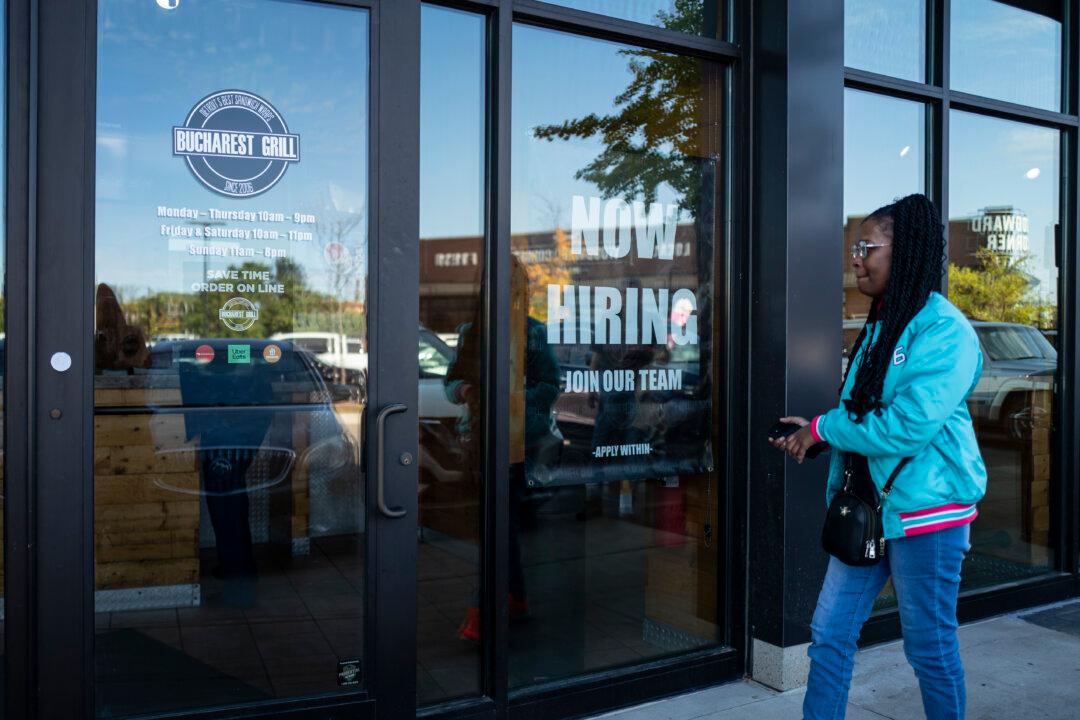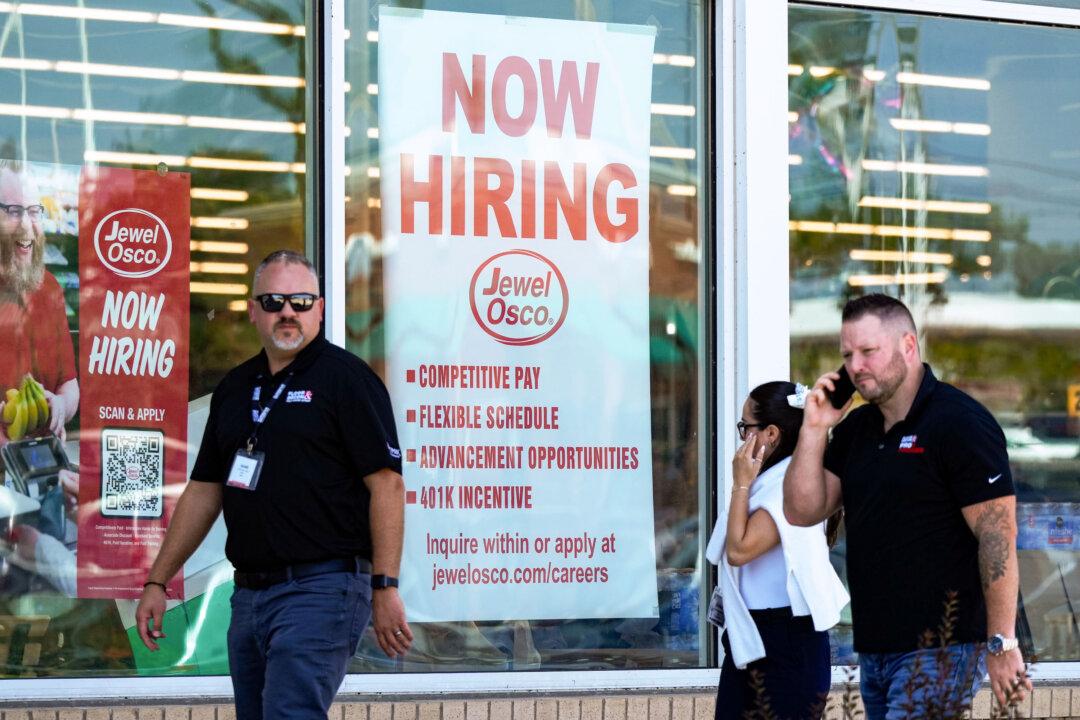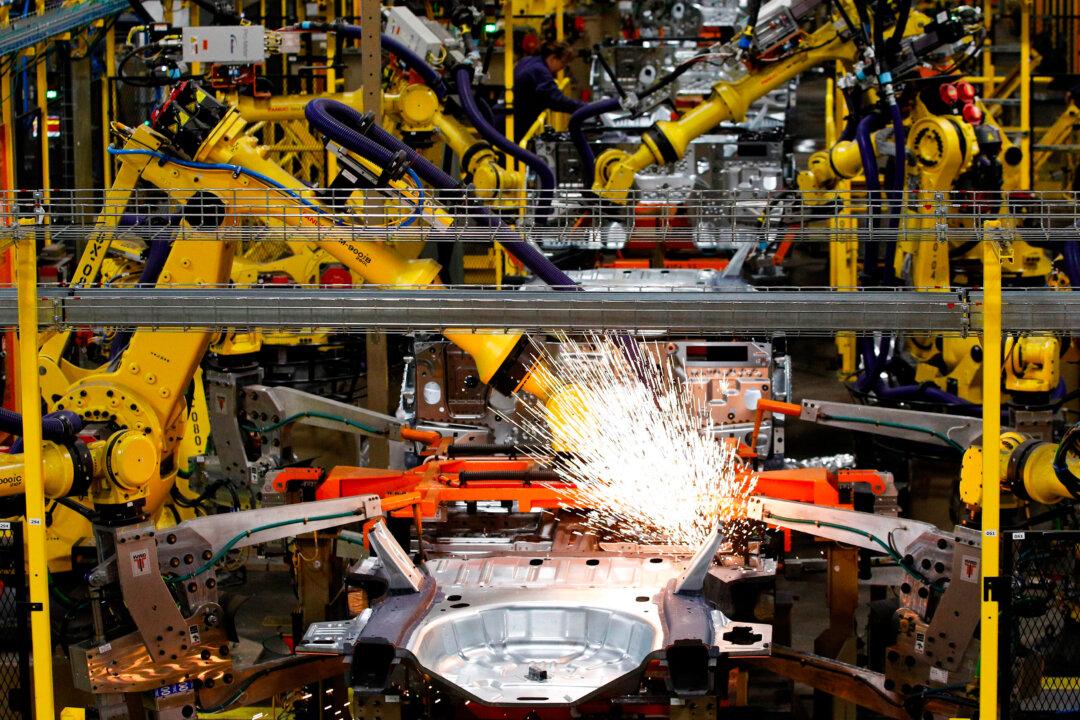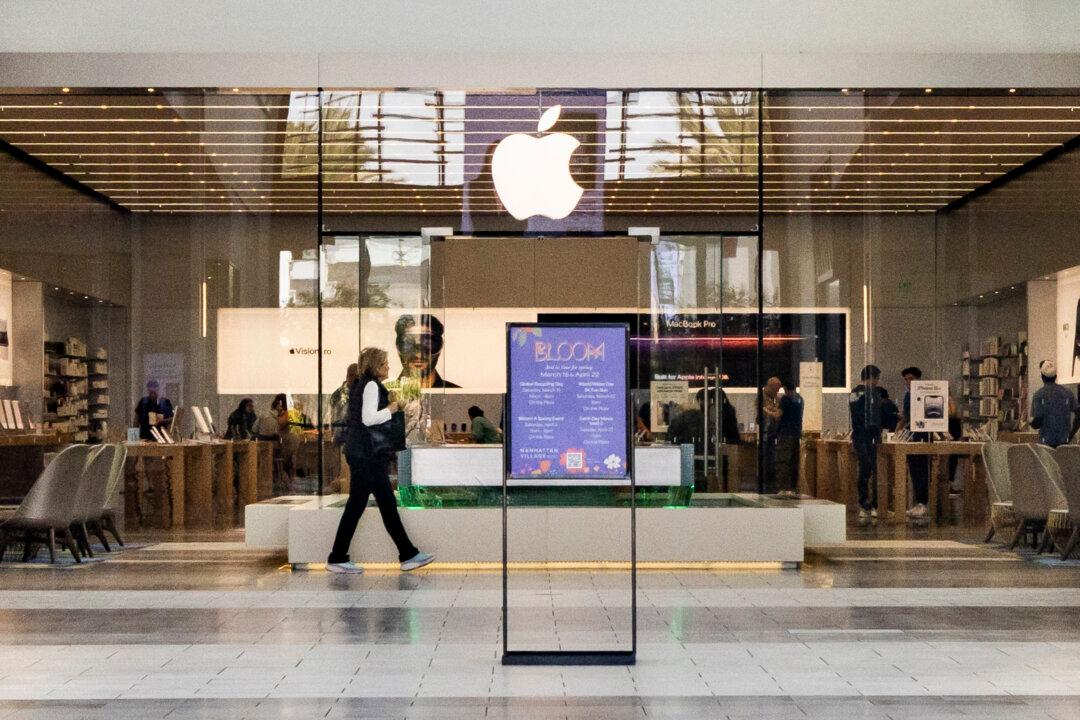Employment growth beat market estimates in April, even as businesses and consumers worry about President Donald Trump’s tariff plans impacting the U.S. economy.
The unemployment rate was unchanged for the second consecutive month at 4.2 percent.
A deeper dive into the April jobs report will reveal notable trends forming in the labor market.
American Versus Foreign Workers
Over the last several years, the growth in the gap between employed U.S. and foreign-born workers has widened significantly.According to the Department of Labor, statistics regarding foreign-born workers include both legal and illegal immigrants.
More Join the Labor Market
New employment data show that many individuals joined or returned to the labor force in April.People not in the labor force and resting on the sidelines declined by 343,000 to a three-month low.
With a slowdown in immigration volumes, this year’s pace of employment expansion “is likely enough to keep up with new jobseekers entering into the workforce,” Bill Adams, the chief economist for Comerica Bank, said in a note emailed to The Epoch Times.
Government Payrolls Tumbling
In the aftermath of the COVID-19 pandemic, government job creation accelerated and accounted for a large share of U.S. employment growth. Between January 2021 and April 2025, the number of employed individuals working for the government soared by more than 2.2 million, representing approximately 15 percent of overall job growth.The Trump administration, through workforce downsizing and cost-cutting actions recommended by the Department of Government Efficiency (DOGE), is attempting to reverse this trend at the federal level.
The decline in federal employment could be higher than reports suggest. “Employees on paid leave or receiving ongoing severance pay are counted as employed in the establishment survey,” the Bureau of Labor Statistics said in the non-farm payrolls report.

In the first four months of 2025, “DOGE Actions” led to 283,172 announced layoffs, and the “DOGE Downstream Impact” contributed to reduction of nearly 7,000 jobs in the education and nonprofit sectors.
Out of Work
Despite an overall solid U.S. labor market, various cracks have been spotted in the employment data.The number of individuals out of work for 27 weeks or more has steadily risen over the past year.
Fed Policy Expectation Changes
Investors no longer expect the Federal Reserve to restart its easing cycle in June.“With the US labor market conditions remaining intact, the Fed can remain a spectator on the sidelines with respect to policy changes as the fallout from [Trump’s] higher tariff regime and shifting trading policy appears to be lagging,” said Charlie Ripley, the senior investment strategist for Allianz Investment Management, in a note emailed to The Epoch Times.
This will likely frustrate the president, as he again urged Fed Chair Jerome Powell to lower rates.
“Consumers have been waiting for years to see pricing come down. No inflation, the Fed should lower its rate!”
What’s Next
U.S. stocks cheered the April jobs report, which indicated that the Trump administration’s tariff plans have yet to adversely impact the labor market.Despite the continued uncertainty surrounding global trade, tariff stress was not found in the jobs arena as employers were still adding to their payrolls.
Jamie Cox, the managing partner for Harris Financial Group, says this is exactly what you want to see if you are engaged in trade endeavors.
“If you are going to embark on a trade war and your economy is consumption based, this is the leverage you want,” Cox said in a note to The Epoch Times.
Last month, Trump unveiled his sweeping tariff plans, which included a universal baseline 10 percent tariff on nearly all U.S. trading partners and higher reciprocal tariffs.
Days later, the president authorized a 90-day pause to allow for trade negotiations. The White House has adjusted the various tariff regimes.
According to Jeffrey Roach, the chief economist for LPL Financial, if the president softens his tariff stance and the labor market holds steady, “the economy could skirt a deep recession,” he told The Epoch Times.
Labor Secretary Lori Chavez-DeRemer thinks the better-than-expected April jobs report is proof that the United States is entering “the golden age.”







